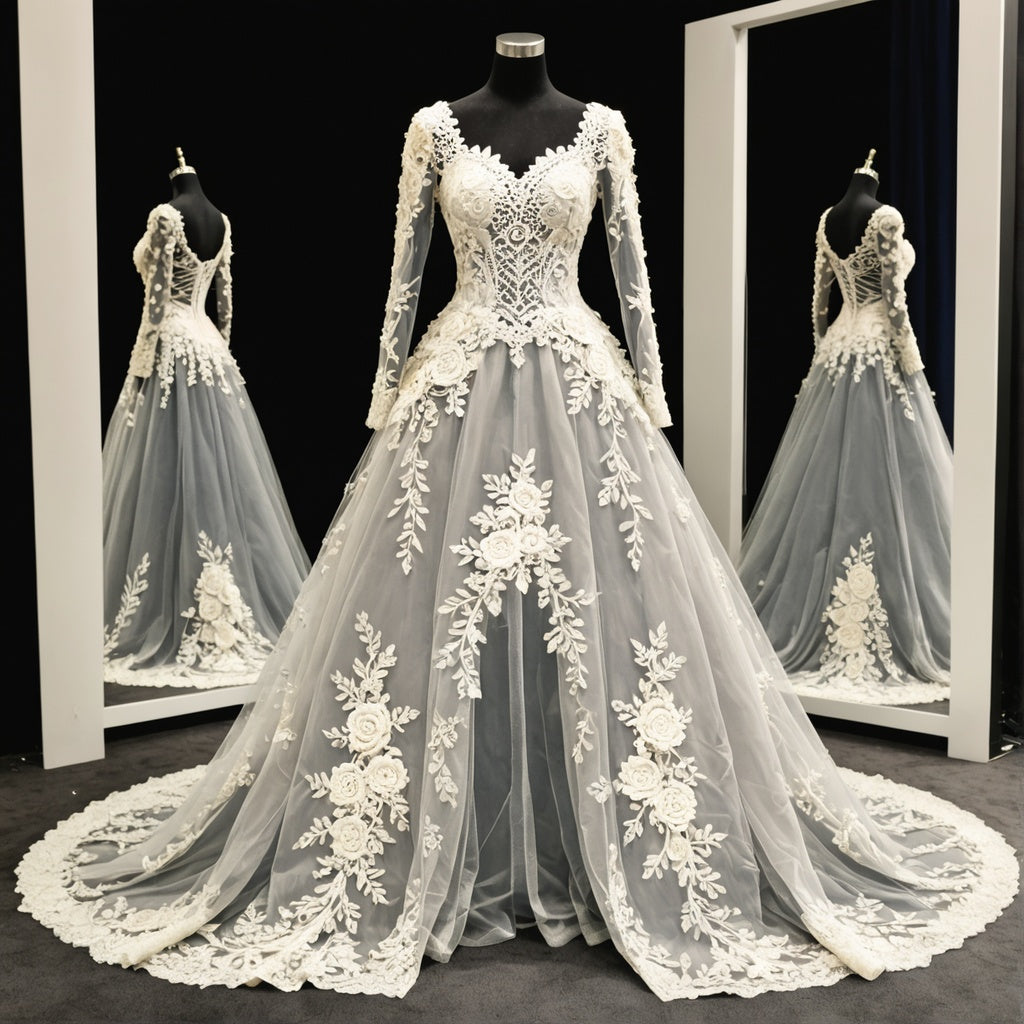The history of lace in fashion is rich and varied, spanning several centuries and reflecting changes in societal values, technology, and fashion trends. Here's a detailed overview based on the provided sources:
-
Origins: Lace's origins are somewhat debated, but it is generally believed that both needle lace and bobbin lace began to develop in Italy in the late 1500s. Initially, lace evolved from other textile techniques, such as embroidery, cutwork, and drawn thread work. The earliest mention of lace comes from the late fifteenth century, where simple plaited laces were used on costumes. By around 1536, lace was noted to have been brought to Zurich from Italy, indicating its spread from Italian origins. Venice became an early hub for lace due to its status as a trading center, with the first known lace pattern books printed there in the 1550s (``).
-
16th Century: During this period, lace rapidly developed from simple decorative trimmings into a more complex openwork fabric. The evolution included needle lace, which involved a single thread, and bobbin lace, which used multiple threads. Bobbin lace, in particular, grew from braids and trimmings used for surface decoration to more intricate patterns (). Lace was not only a status symbol but also became synonymous with seduction ().
-
17th Century: Lace became extremely popular, especially in royal courts. Catherine de Medici introduced Venetian lace-makers to France in 1533, influencing the delicate and graceful lace styles produced there like Alençon, Argentan, and Chantilly. The French court under Louis XIV was particularly extravagant, with lace being a significant part of court dress, including the fashionable frontange (a tall lace headdress). Jean Baptiste Colbert, Louis XIV's finance minister, supported the lace industry by establishing lace schools and workshops (``).
-
19th Century: The industrial revolution brought about changes with the introduction of machine-made lace, which challenged the handmade lace industry. However, there were still periods where handmade lace like Bedfordshire, Cluny, and Yak (wool) laces were fashionable due to their unique qualities that machines couldn't replicate (``).
-
20th Century: By the early 20th century, the handmade lace industry in places like England had largely disappeared, with lace-making becoming more of a craft for personal enjoyment rather than a commercial enterprise. Organizations like The North Bucks Lace Association supported lacemakers in England until they eventually ceased (``).
-
Modern Era: Lace has seen a resurgence in fashion, particularly in bridal wear and high fashion. The post from Exquisite Fabric () highlights this with a stunning example of a modern lace wedding dress, showing how lace continues to be a symbol of elegance and tradition in contemporary fashion. Additionally, lace has found its way into everyday fashion items like tights, as seen in recent trends where lace tights have become popular ().

In summary, lace has transitioned from a status symbol and a mark of wealth in the Renaissance period to a versatile fashion element used in both high-end and everyday wear, demonstrating its enduring appeal and adaptability over centuries. The evolution of lace-making techniques, from hand-crafted to machine-made, has also influenced its availability and use in fashion, making it accessible to a broader audience while still maintaining its luxurious connotations.
Machine-made lace refers to lace that is produced using mechanical means rather than being crafted by hand. Here’s a comprehensive overview based on the provided sources:
-
Early Development: The advent of machine-made lace began in the early 19th century with significant innovations in textile machinery. In 1808, John Heathcoat invented the bobbinet machine which was pivotal in transitioning lace production from a cottage industry to a more industrialized process. This machine was based on observing the hand movements of manual lace makers, and by 1809, Heathcoat's Old Loughborough machine was producing plain net lace, which became the standard (``).
-
Key Machines:
-
Leavers Machine: Adapted by John Levers in 1813 from Heathcoat's machine, this machine was enhanced to work with the Jacquard apparatus by 1841, allowing for the production of patterned lace complete with net and outline. The Leavers machine is noted for its versatility in making patterned lace (``).
-
Lace Curtain Machine: Invented by John Livesey in 1846, this was another adaptation of Heathcoat's bobbinet machine, specifically designed for producing lace curtains, which became very popular in Victorian homes (``).
-
Barmen Machine: Developed in the 1890s in Germany, this machine could replicate simpler handmade laces like Torchon by mimicking the movements of hand lace-making bobbins (``).
-
-
Types and Applications: Machine-made lace could replicate virtually every type of handmade lace by the mid-19th century, including complex motifs mounted on machine-made net, leading to new styles like Carrickmacross and Tambour lace. This democratized lace, making it more accessible and affordable to the masses (``).
-
Distinction from Handmade Lace: While to the untrained eye, machine-made lace might appear similar to handmade lace, there are distinguishable differences. For instance, in Chantilly Bobbin Lace, the motifs' half-stitches in handmade lace are usually more defined compared to machine-made lace, which tends to be less detailed due to the mechanical process (``).
-
Modern Use: Today, machine-made lace is widely used in various fashion items due to its cost-effectiveness and the ability to produce consistent patterns on a large scale. It's seen in everything from high fashion like wedding dresses to everyday items like tights, reflecting its versatility and enduring popularity in fashion (``).
In summary, machine-made lace has revolutionized the lace industry by making lace more accessible, affordable, and versatile while maintaining its intricate beauty, albeit with some differences in detail and texture compared to its handmade counterparts.






